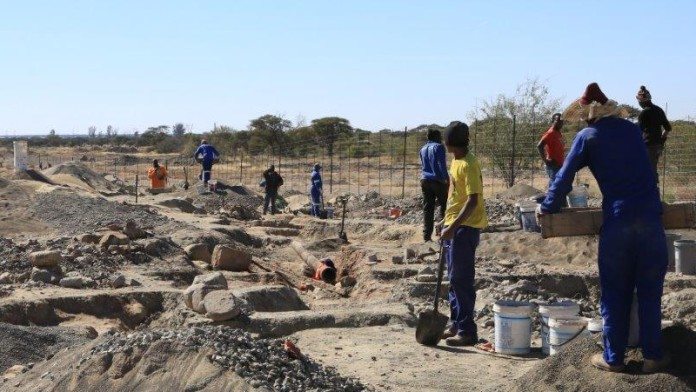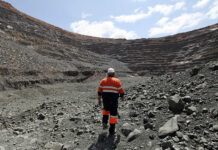
AN invasion of more than one thousand illegal diamond miners – zama-zamas – in South Africa’s Northern Cape town of Kimberley is threatening the viability of London-listed Petra Diamonds (Petra) operations and, if left unchecked, could also have serious negative consequences for South Africa’s overall diamond mining and beneficiation industries.
The reason for this is that the diamonds recovered by the zama-zamas are in contravention of the Kimberley Process certification scheme. The scheme is meant to assure consumers that the diamonds they are buying have been legally mined and are not “conflict diamonds”.
Instead, the diamonds mined by the zama-zamas are being sold through IDB (illicit diamond buying) channels with the revenues flowing to unknown criminal organisations.
According to Petra CEO Johan Dippenaar: “It will be extremely bad for the country if people start to view South African diamonds as being tainted”.
Petra has bought the former De Beers operations around Kimberley and combined them into the Kimberley Ekapa Mining (KEM) joint venture. KEM has an estimated remaining economic life of 20 years from two surface tailings retreatment operations and one underground mine which had remaining lives of between only three and eight years if mined separately.
According to KEM CEO, Jahn Hohne, the illegal miners are operating on parts of the 6,000 hectares of mining rights that KEM acquired from De Beers in January. He said the numbers of illegal miners had grown “exponentially” since December last year to the point where they were becoming “a serious threat to our operations”.
The danger is that the zama-zamas could sterilise large volumes of KEM’s reserves by cherry-picking the high-grade zones with the result that the remaining material would not be worth treating because the remaining grade would be too low to be economically viable.
Hohne said the zama-zamas had intimidated KEM’s staff and were operating in contravention of four acts: the Diamond Act (which regulates diamond sales to prevent IDB); the Minerals and Petroleum Resources Development Act; the Mine Health and Safety Act, and the National Environmental Management Act.
He added that in addition to “life-threatening” intimidation of KEM staff, the zama-zamas had carried out bouts of arson and malicious damage to property as well as widespread theft of equipment, in particular, copper cabling which has had a significant impact on KEM’s operations.
Asked what KEM was doing about the zama-zamas, Hohne replied KEM was in constant communication with the South African Police Service (SAPS) and the Department of Mineral Resources (DMR). He pointed out that De Beers had laid charges with the police against the zama-zamas during the previous two years.
Asked what the DMR and SAPS had done about the situation Hohne commented: “SAPS has supported us in dealing with situations where our workers have been threatened, but we are disappointed no further action has been taken to uphold the law”.
The deteriorating situation was highlighted by the Diamond Fields Advertiser on September 7 in an article which quoted DMR regional manager Sunday Mabaso as confirming the zama-zamas were operating illegally, but also that the DMR was looking at ways to legitimize their operations.
Mabaso did not reply to phone calls or e-mailed questions from Miningmx asking if he was correctly quoted and also why the DMR had not acted to stop this illegal mining. Questions e-mailed to the office of the Diamond Regulator in Johannesburg as well as Martin Madlala, spokesman for the Minister of Mineral Resources, were also not answered by the stated deadline.
Mabaso’s comments have infuriated legitimate small-scale miners in the region.
According to one who was speaking on condition of anonymity: “If you or I tried to mine diamonds illegally like this, we would be locked up within 24 hours, yet these guys are being allowed to get away with it big-time. You have to wonder who is behind all of this”.
Said Hohne: “The DMR can legitimize the zama-zama operations by granting mining permits on suitable, available ground but there is no way the DMR can grant permits to legalise zama-zama operations on our mining rights”.
Kimberley has been in economic decline since De Beers starting winding down its operations around the city more than a decade ago.
De Beers’ successor on a limited scale is KEM, but if KEM’s operations are materially harmed by the zama-zamas to the point where it has to curtail them, then Kimberley and its citizens will pay a very high economic price through lost taxes, business expenditures and jobs.










